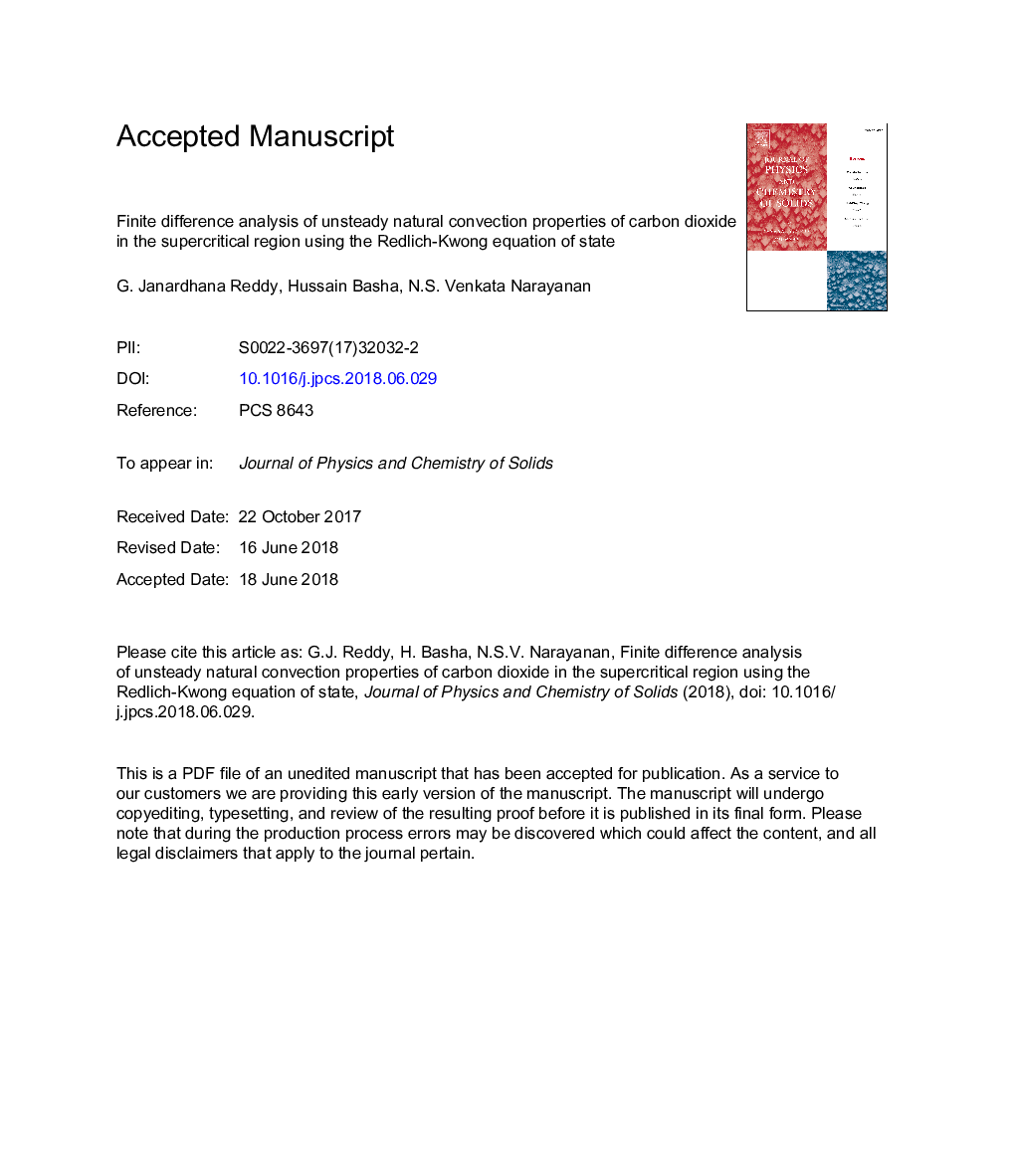| Article ID | Journal | Published Year | Pages | File Type |
|---|---|---|---|---|
| 7919912 | Journal of Physics and Chemistry of Solids | 2018 | 47 Pages |
Abstract
In this research article, the transient boundary layer flow of laminar viscous incompressible supercritical fluid produced by an isothermal vertical flat plate is solved by using the finite difference method. Unlike other numerical methods, the Crank-Nicolson implicit finite difference approach gives precise numerical approximations that are uniformly valid for all non-dimensional time. Moreover, simple and precise numerical formulae for the average skin-friction and heat-transport coefficients are given, which agree well with analytic results and hence are advantageous in the related industries. To predict the natural convection properties of carbon dioxide, a new equation for thermal expansion coefficient is obtained based on the Redlich-Kwong equation of state (RK-EOS) in the supercritical region. The calculated values of thermal expansion coefficient based RK-EOS is closer to the experimental values, which confirms the accuracy of the proposed model. The numerical simulations are performed for carbon dioxide in the supercritical region adjacent to the vertical plate. The solution of velocity, temperature, average momentum and heat transport coefficients has been obtained and is discussed in detail through the graphical results for various flow parameters in the supercritical region. Numerical results showed that the time required to attain the steady-state rises for the amplifying values of reduced pressure and reduced temperature in the supercritical region. It is also observed that the thermodynamic properties of supercritical carbon dioxide are more sensible to temperature changes than pressure changes.
Keywords
Related Topics
Physical Sciences and Engineering
Materials Science
Electronic, Optical and Magnetic Materials
Authors
G. Janardhana Reddy, Hussain Basha, N.S. Venkata Narayanan,
